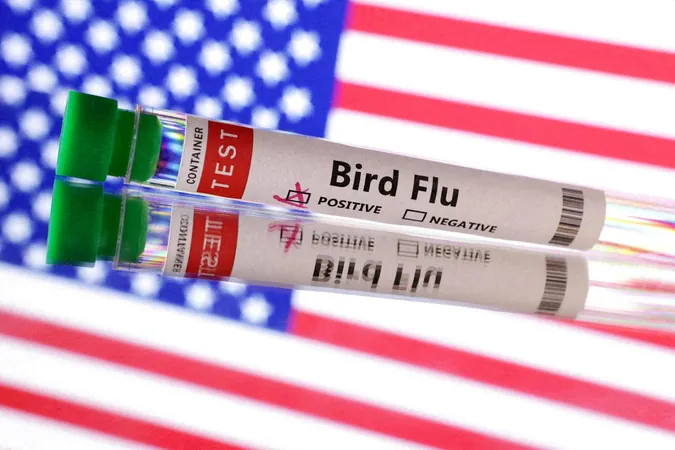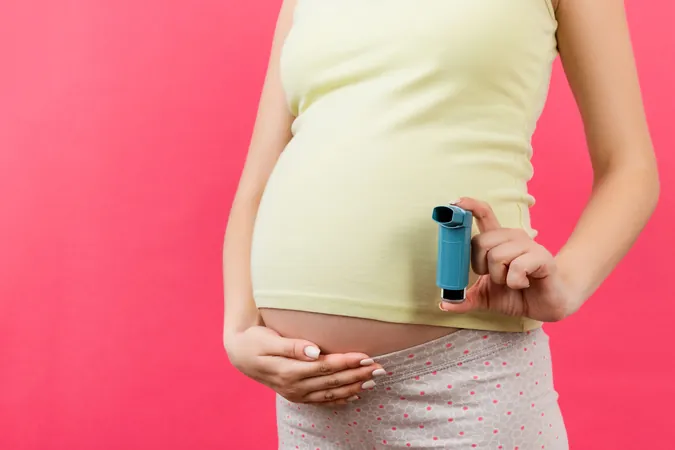
Alarm Bells Ring as New Bird Flu Mutation Emerges in the US, and Cats Become Unlikely Victims
2024-12-27
Author: Ming
Introduction
WASHINGTON - A significant new mutation of bird flu has been identified in the United States, raising concerns among health experts. The unsettling development involves not just the critical human cases linked to the virus but also alarming infections observed in domestic cats.
Details of the New Mutation
Recent findings indicate that a severe strain of the H5N1 virus, isolated from a critically ill patient in Louisiana, has shown genetic mutations that could enhance its ability to adapt to human airways. While this mutation has not been confirmed to have spread to others, the very nature of the changes has health authorities on high alert.
Critical Cases and CDC Analysis
In a notable incident earlier this month, an elderly patient was reported in 'critical condition' after being infected with this aggressive strain. An analysis by the Centers for Disease Control and Prevention (CDC) revealed that genetic alterations present in the patient’s throat samples could potentially increase the virus's ability to attach to receptors in the human upper respiratory system.
Absence of Confirmed Transmission
Despite these findings, the CDC has clarified that such mutations have yet to be identified in avian hosts, including the birds from a nearby poultry flock believed to be the source of the initial infection. Instead, the variations likely resulted from the virus replicating in the patient’s body during a severe illness, with no evidence of human-to-human transmission detected thus far.
Expert Opinions on the Mutation's Implications
Experts remain cautious regarding the implications of these mutations. Dr. Angela Rasmussen, a virologist, underscored that while these changes might facilitate the virus’s entry into cells, further investigation, including animal studies, is essential to ascertain the virus's transmissibility. Historically, similar mutations seen in critically ill patients have not resulted in widespread outbreaks.
Factors for Efficient Transmission
Additionally, Professor Thijs Kuiken pointed out that while attachment to human cells is essential for the virus's spread, it is only one of several factors necessary for efficient transmission. Variations could also lead to milder symptoms, focusing on upper respiratory issues rather than severe pneumonia.
Rising Human Cases of Bird Flu
However, the alarming frequency of bird flu occurrences cannot be ignored. The CDC has recorded 65 confirmed human cases of bird flu in 2024 alone, signifying a worrying trend that suggests numerous cases may have gone unreported, particularly among poultry and dairy workers. The prevalence of the virus enhances the risk of it merging with seasonal influenza strains, which could lead to rapid evolutionary changes—evoking memories of past flu pandemics in 1918 and 2009.
Impact on Domestic Cats
Another concerning angle is the increase in bird flu cases among cats. A grim report from Oregon details a feline's death after ingesting raw pet food contaminated with the H5N1 strain, prompting an urgent recall of certain pet food products. The cat, which had no outdoor exposure, had its infection traced back to the virus in the contaminated food—a chilling reminder of the virus's growing impact beyond poultry.
Cases in Wild Cats
Moreover, in Washington State, twenty big cats at a sanctuary succumbed to the bird flu, reflecting the virus's devastating reach within the animal kingdom. Dr. Rasmussen warns that outdoor cats, especially those that may hunt or scavenge, pose a risk by possibly carrying the virus back home, exposing humans through close interactions.
Conclusion and Call for Vigilance
With 2024 presenting a complex scenario of bird flu mutations and unusual infections in pets, the health community is on high alert, advocating for proactive measures and vigilance—especially for those with outdoor pets. As the situation continues to develop, one thing is clear: the threat of bird flu, both to human health and animal welfare, cannot be underestimated. Stay tuned for updates as this critical story unfolds!


 Brasil (PT)
Brasil (PT)
 Canada (EN)
Canada (EN)
 Chile (ES)
Chile (ES)
 Česko (CS)
Česko (CS)
 대한민국 (KO)
대한민국 (KO)
 España (ES)
España (ES)
 France (FR)
France (FR)
 Hong Kong (EN)
Hong Kong (EN)
 Italia (IT)
Italia (IT)
 日本 (JA)
日本 (JA)
 Magyarország (HU)
Magyarország (HU)
 Norge (NO)
Norge (NO)
 Polska (PL)
Polska (PL)
 Schweiz (DE)
Schweiz (DE)
 Singapore (EN)
Singapore (EN)
 Sverige (SV)
Sverige (SV)
 Suomi (FI)
Suomi (FI)
 Türkiye (TR)
Türkiye (TR)
 الإمارات العربية المتحدة (AR)
الإمارات العربية المتحدة (AR)